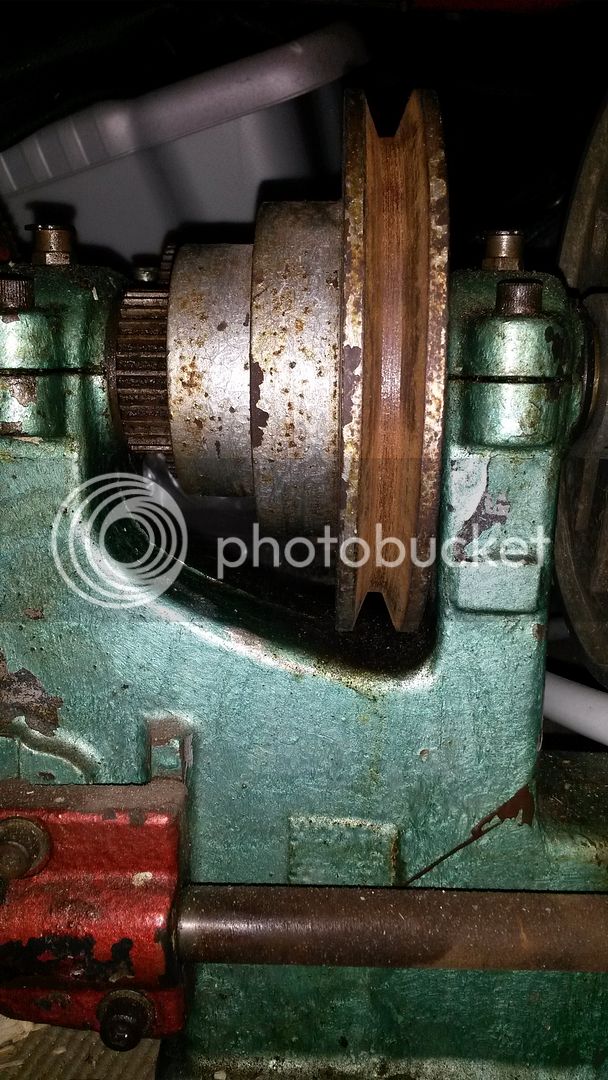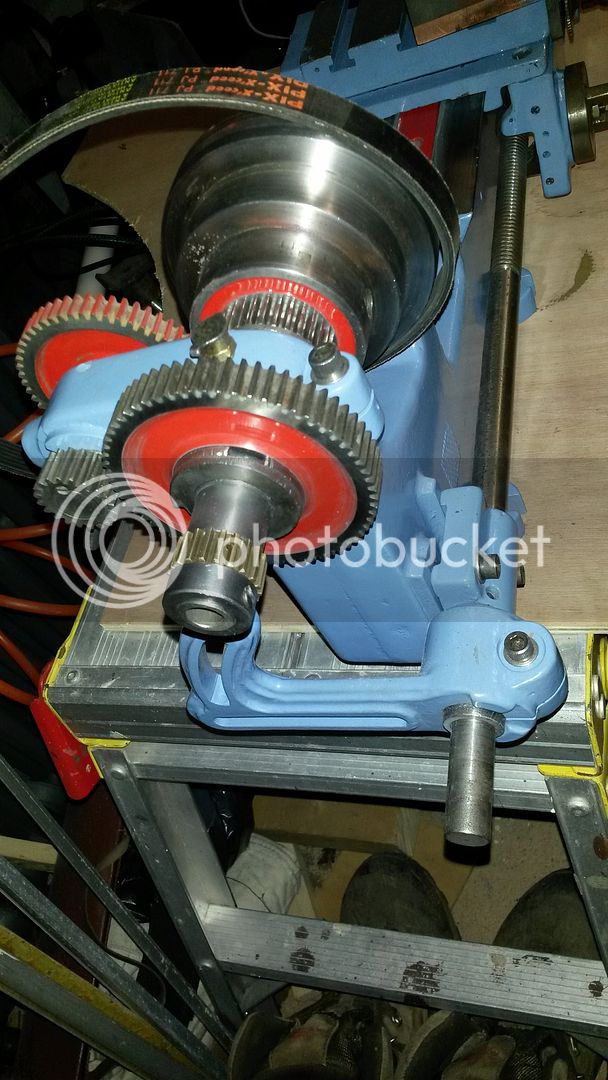Water-Mark
Established Member
Not long after buying one lathe another came up local and cheap, too cheap to pass up as it happens and the restoration is soon to begin.
One thing that puzzles me is the headstock pulley, It has one very large v belt groove and two flat belt steps below.



I had thought of machining v grooves in the other pulleys but the smaller one carries the locking screw for the back gear and I'd be left with one gear much larger than the others.
I now think I'm likely to machine a flat the v groove for a flat belt.
Any suggestions as to how or why the pulley is like it is?
One thing that puzzles me is the headstock pulley, It has one very large v belt groove and two flat belt steps below.



I had thought of machining v grooves in the other pulleys but the smaller one carries the locking screw for the back gear and I'd be left with one gear much larger than the others.
I now think I'm likely to machine a flat the v groove for a flat belt.
Any suggestions as to how or why the pulley is like it is?




































